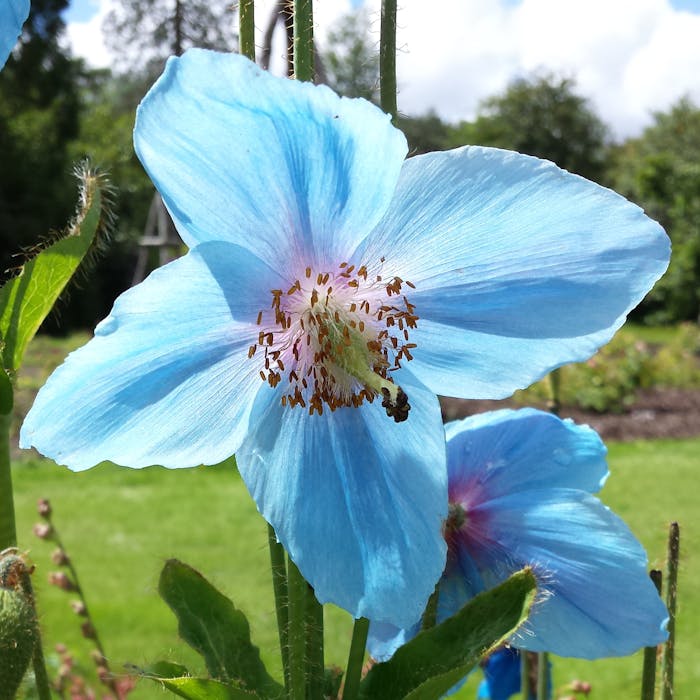
The Quest for the Blue Poppy
The extraordinary Himalayan Blue Poppy is a popular garden plant in Britain. However, for a long time it was almost mythic, and it took several adventurous Britons to bring this plant home to grace our gardens.
The blue poppy is the Himalayan kingdom of Bhutan's national flower. Despite this, it is not a common sight there, flowering only during the monsoon period in rocky terrain above the tree line.
Westerners were aware of the blue poppy from the 1850s, but were unsure whether these flowers actually existed, in the absence of any proof.
It was not until 1913 that British explorer Frederick Bailey plucked one in the Tsangpo region of Eastern Tibet and pressed it within the pages of a notebook.
Bailey was a butterfly collector not a botanist, so, a decade later, following precise instructions given by Bailey, English botanist, adventurer and spy Frank Kingdon Ward set out to find more of these poppies.
Kingdon Ward seems to have been quite a character - making around 25 plant-hunting expeditions in the Himalayas and China over fifty years. He survived many accidents including being impaled on a bamboo spike, falling off a cliff (stopped by a tree growing from the cliff), lost for two days with no food, tent crushed by a tree in a storm, and he was close to the epicentre of an earthquake (registering 9.6 on the Richter magnitude scale) on 15th August 1950 during an expedition in Assam.
He also found time to marry twice and build an amazing rockery in his garden in London designed to look like a bend in a river ravine in the Himalayas. Unfortunately the site now lies under a runway at Heathrow!
Meanwhile, the elusive poppies had apparently been spotted again in 1922 by a British Himalayan expedition, led by the legendary mountaineer George Mallory, on their failed attempt to reach the summit of the (then unconquered) Mount Everest.
Kingdon Ward succeeded in collecting seeds of the blue poppy in 1924, and is credited with introducing the plant to European gardens.
The flowers were introduced amid much excitement at the RHS Spring Show of 1926.
They remain one of the most enchanting plants available at the garden centre and are a challenge to grow successfully.
Further reading
Links to external websites are not maintained by Bite Sized Britain. They are provided to give users access to additional information. Bite Sized Britain is not responsible for the content of these external websites.
